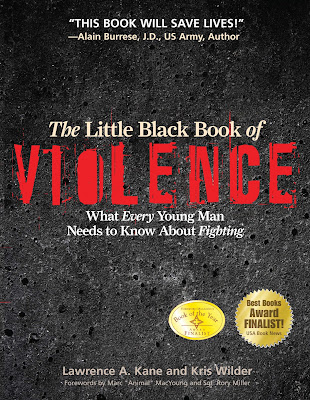The classic map and compass navigation guide-revised for the age of GPS GPS devices are great, but they can break, get lost, or easily be hampered by weather conditions, making basic map and compass skills essential for anyone who spends time outdoors. This popular, easy-to-use orienteering handbook has been helping people find their way for more than fifty years. Now updated to include information on GPS as well as current Web sites, references, sources, and photographs, it remains the book of choice for professional outdoorsmen, novice orienteers, and outdoor organizations as well as teachers, scout leaders, recreational hikers, hunters, and others around the world. Coverage includes understanding map symbols; traveling by map alone, by compass alone, or by map and compass together; finding bearings; sketching maps; and traveling in the wilderness.If you're looking to feel more comfortable in the wilderness, this updated guide is an indispensable reference.
- Explains basic map and compass skills clearly
- Fully updated edition, including information on GPS
- Includes up-to-date Web site addresses, references, and sources
- Features a fresh, rugged design
- Ideal book for beginners
This blog was originally conceived as a personal reference. Later I added notes and my publications
Friday, December 4, 2009
Be Expert with Map and Compass. Bjorn Kjellstrom and Carina Kjellstrom Elgin
Tuesday, December 1, 2009
Thursday, April 16, 2009
The Little Black Book Violence: What Every Young Man Needs to Know About Fighting
The Little Black Book of Violence will arm you with the knowledge and good sense to make informed choices in hazardous situations. While some yahoo spewing insults about your favorite sports team is worlds apart from a drug-crazed lunatic lunging at you with a sharp knife in his hands and bloodlust in his eyes, there is a large gray area in between these two extremes where hard and fast rules do not always apply. This is where wisdom, oftentimes hard-earned wisdom, makes the difference between good decisions and bad ones. Every time you engage in violence, no matter how small or trivial it may appear to be at the time, it has the potential of escalating into something extraordinarily serious. What is really worth fighting for when you might find yourself spending the rest of your life behind bars, confined to a wheelchair, or trying to dig yourself out of bankruptcy from beneath the crushing weight of a civil lawsuit? It is important to ask yourself, "Is this really worth fighting over?" While in some instances the response could legitimately be "Yes," more often than not it ought to be "No." More than mere techniques, this book fills in crucial information about street survival that most martial arts instructors don't teach or even know. You will learn how to use awareness, avoidance, and de-escalation to help stave off violence. Despite the best intentions, however, you may still find yourself in situations where you have no choice but to fight and others where it is prudent to do so. Consequently you will also learn smart things you might want to try and dumb things you should attempt to avoid during a physical confrontation. In addition to learning strategies and techniques for defending yourself on the street you will also learn how to manage the aftermath of violence, including performing first aid, interacting with law enforcement, managing witnesses, finding a good attorney, navigating the legal system, dealing with the press, and overcoming psychological trauma. Men, who commit about 80 percent of all violent crimes, are twice as likely to become victims of aggressive behavior as women. While written primarily for this at-risk demographic, this comprehensive tome is essential reading for anyone who regularly deals with violence, thinks they may encounter a hostile situation, or who simply wants to increase their ability to survive a dangerous encounter.
Monday, March 2, 2009
Возражения против дактилоскопирования
• идентификация по отпечаткам пальцев осуществляется людьми, а людям свойственно ошибаться;
• чьи-либо отпечатки пальцев могут оказаться на месте преступления по вполне законной причине. Присутствие идентифицируемых отпечатков создает презумпцию виновности;
• отпечатки могут быть случайно или преднамеренно перепутаны в полицейской лаборатории;
• хранимые в полиции файлы с отпечатками могут быть преднамеренно изменены с целью обвинения невиновного;
• экспертные заключения по анализу отпечатков могут быть перепутаны или специально изменены.
Чем больше мы доверяем технологиям идентификации, тем больше различных видов мошенничества получаем взамен, а возможность преднамеренного мошенничества мы не сможем исключить никогда. Именно по этой причине дактилоскопирование не может гарантировать идентификацию, оно лишь обеспечивает связь конкретного пальца с записью в файле. Измените файл, и вы измените идентификацию.
Но у монеты есть и обратная сторона: дактилоскопия как средство строгой идентификации может быть использована репрессивными и тоталитарными режимами. Люди, стоящие у руля в таких обществах, обеспечивают свою власть в том числе и благодаря тому, что любой противник существующего порядка может быть идентифицирован и будет постоянно находиться под угрозой расправы до тех пор, пока не покорится или не будет уничтожен. Пропускная система во времена апартеида в Южной Африке и идентификационные карточки, выдаваемые палестинцам на оккупированных Израилем территориях, являются типичными примерами таких систем идентификации. Недемократические режимы нуждаются в системах точной идентификации: если подвергнуть наказанию не того человека, это увеличит число противников режима и, что, вероятно, более важно, даст возможность уйти от ответственности истинному виновнику.
Источник:
Симсон ГАРФИНКЕЛЬ,
"Все под контролем: Кто и как следит за тобой"


